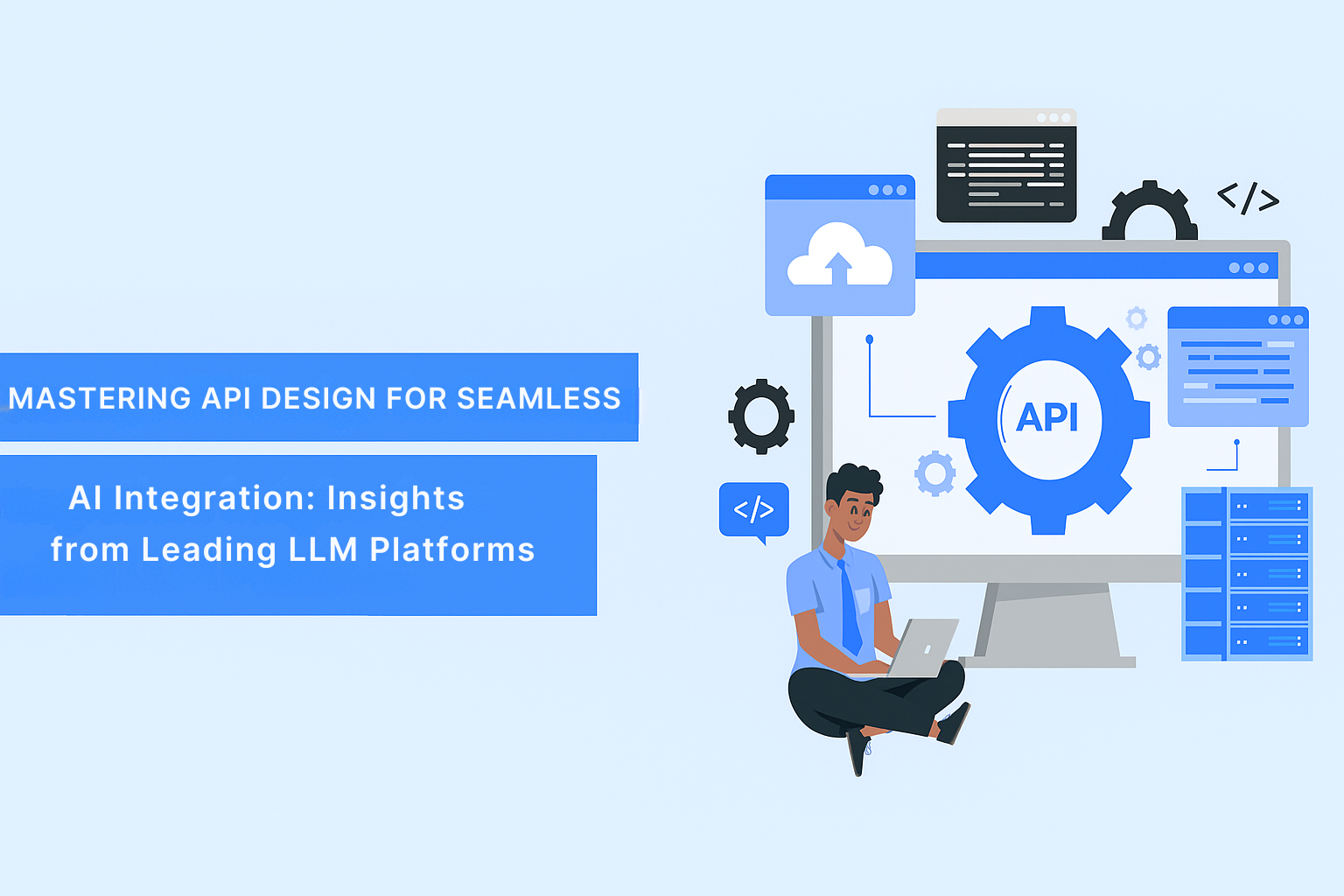
Introduction
APIs have always been the bridge between systems and applications. But in the era of AI, especially with the rise of large language models (LLMs), APIs play a much more dynamic and complex role. They don’t just transmit data; they orchestrate powerful interactions between end-users and machine intelligence.
Top LLM providers like OpenAI, Anthropic, and Cohere have redefined how modern APIs should function—balancing performance, flexibility, safety, and cost. This article explores how to build high-performance APIs tailored for AI integrations, borrowing key lessons from the most successful LLM platforms.
Understanding AI APIs
Traditional APIs are deterministic. You send a request, and you get a fixed response based on logic and data. In contrast, AI APIs are probabilistic—they generate text, code, or content based on context and training, not strict logic.
LLM interactions are token-intensive and context-sensitive. A single request may involve thousands of tokens, and the model’s understanding of prior context is crucial to generating coherent responses. That means your API must manage not just content but memory and context efficiently.
AI APIs often revolve around a prompt-response dynamic. The client sends a natural language prompt, and the model returns a generated output. Designing an API that captures this flow cleanly is vital.
Core Principles of AI API Design
Every input is tokenized before processing. Good APIs should help developers estimate or pre-calculate token counts. This allows for more controlled outputs and cost management.
-
REST is simple and compatible with most systems.
-
gRPC provides better performance for high-frequency applications.
-
GraphQL is flexible but can overcomplicate AI use cases.
REST remains the most commonly used method for LLM APIs due to its clarity and ease of integration.
AI APIs should return structured JSON with clearly defined fields such as text, tokens_used, model, and finish_reason. This allows clients to handle diverse outputs gracefully.
Architecting for Scale and Flexibility
APIs should ideally be stateless, especially under heavy loads. Use session IDs if context needs to be maintained over multiple calls.
Deploy model backends across regions with load balancers and autoscaling. Queue management also becomes essential during traffic surges.
Using edge locations or regional caching layers can help reduce API response times globally.
Lessons from Top LLM Providers
OpenAI’s design focuses on minimalism and predictable behavior. Their /completions and /chat/completions endpoints are intuitive and stable across versions.
Anthropic’s Claude emphasizes safe outputs, structured request formatting, and a focus on user guardrails.
Cohere’s APIs come with detailed documentation, live demos, and enterprise support, catering to teams integrating models into production.
Security and Compliance Essentials
Use API keys, OAuth2, or JWT-based systems. Always encrypt tokens and monitor misuse through IP tracking and usage patterns.
Implement tiered rate limits and quotas to protect infrastructure and prevent DDoS-style abuse.
Ensure all data is handled per local regulations (GDPR, HIPAA, etc.). Allow users to delete stored data and opt out of training datasets.
Reliability and Resilience in AI APIs
LLMs can hang or fail unexpectedly. Use timeout thresholds, clear error codes, and user-friendly messages to keep things smooth.
If a primary model fails or is overloaded, redirect traffic to a backup model or a smaller version with reduced capability.
Track prompt content, latency, tokens used, and output metadata to analyze performance and debug effectively.
Optimizing for Cost and Efficiency
Most LLM APIs charge per token used. Include usage dashboards for transparency and allow developers to set token caps per request.
Cache repeated prompts and compress payloads where applicable. Save compute cycles and reduce latency.
Offer fine-tuning options with dedicated endpoints. This lowers overall usage and improves relevancy in generation tasks.
Developer Experience Matters
Create comprehensive guides, quick starts, and code walkthroughs. Reduce time-to-first-output as much as possible.
Offer SDKs in Python, JavaScript, and other popular languages. Use playgrounds for real-time API testing.
Error handling should be developer-friendly, with HTTP status codes and custom error messages that explain what went wrong and how to fix it.
Multi-Tenant and Enterprise Integration
Ensure one client’s data or outputs don’t leak into another’s workspace. Use encryption and container isolation techniques.
Allow organizations to assign roles with specific permissions (e.g., admin, developer, read-only).
Offer dedicated model hosting for enterprise clients with compliance and scalability needs.
Version Control and Prompt Stability
Use clear versioning like /v1, /v2, and include version metadata in responses.
Lock certain prompt behaviors or formats to specific versions to avoid regressions in outputs.
Always maintain older versions of APIs as long as they’re in use, giving clients time to upgrade.
AI-Specific Challenges and How to Solve Them
Implement automatic truncation, pre-checks, or return warnings when prompts exceed model limits.
Filter user input, validate prompt structures, and monitor for suspicious patterns.
Clarify in your docs that AI output is not factual or guaranteed. Offer moderation endpoints if needed.
Real-World Applications of AI APIs
Customer service bots powered by LLMs are becoming the standard across industries.
From blog posts to emails, content tools are leveraging AI APIs to speed up production.
Knowledge bases, research tools, and even browsers now use LLMs to surface and condense information.
Future Trends in AI API Development
Break AI features into modular microservices that can be recombined or scaled independently.
APIs will soon support text, image, audio, and video inputs all in one pipeline.
Streaming APIs and WebSocket-based integrations will allow real-time text generation and content filtering.
Conclusion
APIs are at the heart of every successful AI integration, and their design will define how well users can interact with powerful LLMs. By learning from today’s top providers and applying best practices, you can build an AI API that’s not just functional—but robust, secure, scalable, and future-ready.
Whether you’re designing your first AI interface or scaling your platform to serve millions, these principles will help you stay ahead of the curve in the ever-evolving world of AI.
FAQs
1. How do AI APIs differ from traditional APIs?
AI APIs are designed for probabilistic outputs like text generation, requiring prompt-based requests and token-aware infrastructure.
2. What are token limits and why do they matter?
Token limits control the size of input and output for LLMs. Exceeding them can result in errors or cut-off responses.
3. Can I host my own LLM and expose it via API?
Yes, open-source models like LLaMA and Mistral can be self-hosted, but this requires powerful hardware and deep ML expertise.
4. How do I prevent misuse of my AI API?
Use rate limits, abuse detection systems, and input validation to control malicious behavior.
5. What are the top LLM APIs available today?
OpenAI, Anthropic, Cohere, Mistral, and Hugging Face are among the most prominent LLM API providers today.

